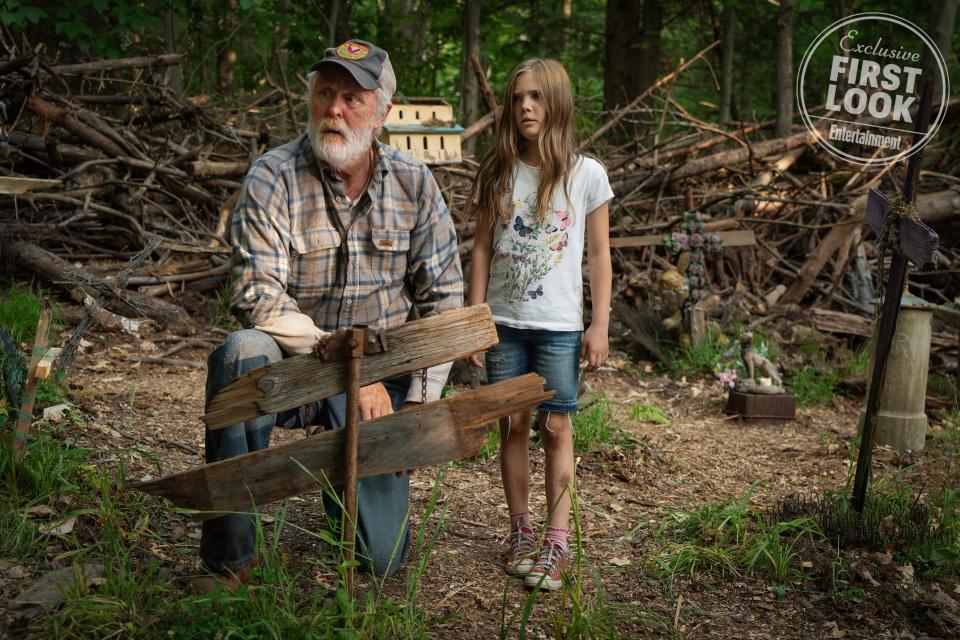The cat came back: First Look at the new movie version of Stephen King's 'Pet Sematary'
A version of this story appears in the new issue of Entertainment Weekly, on stands Friday, or buy it here now. Don’t forget to subscribe for more exclusive interviews and photos, only in EW.
Curiosity lures the little girl down the old path behind her house — a feeling that only deepens along with the surrounding woods.
She ends up in a clearing, staring at what looks like a scattering of junk and litter. There’s a sideways fishbowl. Moldy stuffed animals stare from the weeds. Boards, pipes, and beaten tin jut from the ground. Photographs and drawings that weep with dried rainwater are tacked to the occasional tree.
Then she notices the debris is arrayed in concentric circles. These are markers. “Smucky the Cat,” one of them reads. “He was obedient.” At the entrance to the clearing stands a weatherworn piece of scrapwood with another misspelling: Pet Sematary.
That’s the familiar title of this new film version of Stephen King’s 1983 novel, a tragic story of a young family, a lonely old man, and a cat with more than nine lives.
Directed by Dennis Widmyer and Kevin Kölsch, best known for the 2014 Hollywood horror-satire Starry Eyes, this April 5 film is the latest in a resurgence of King adaptations to follow the monstrous success of last year’s It. Like that tale of Pennywise and the Losers, Pet Sematary is not just based on a best-selling novel but also has an earlier screen adaptation, from 1989, that still leaves a cold spot in the hearts of fans.
“One of the things about doing a new version now is our understanding of life and death has progressed,” says producer Lorenzo di Bonaventura. “But are we more sophisticated about it or less?”
Parents today, he notes, are definitely more fearful and protective than they were in the ’80s. “One of the most interesting themes in the book, the original movie, and this one is, ‘How far would you go to see someone again?’” he says. “But another thing we’re exploring is how you can’t run” from the things that scare you.
You can only face them, live with them — or be destroyed by them.
This scene being shot in the woods of Ontario, Canada, is how Ellie Creed (played by 11-year-old Jeté Laurence) discovers the pet graveyard that other children in the town of Ludlow, Maine, have maintained for generations. But her attention is quickly drawn to the jagged barricade of fallen trees that wall off the rest of the forest.
She doesn’t know it, but there’s another, more sinister burial ground further beyond it.
Ellie is just beginning to climb the deadfall when she feels a sharp pain in her leg and hears a roaring, gravelly voice — “Hey! You get down from there now!” — before losing her footing and plunging to the ground with a cry.
An old man in dirty jeans and a flannel shirt rushes to her aid. His white beard is stained with nicotine, making his mouth a little yellow circle of worry. His name is Jud Crandall (played in the original by Fred Gwynne and now by John Lithgow).
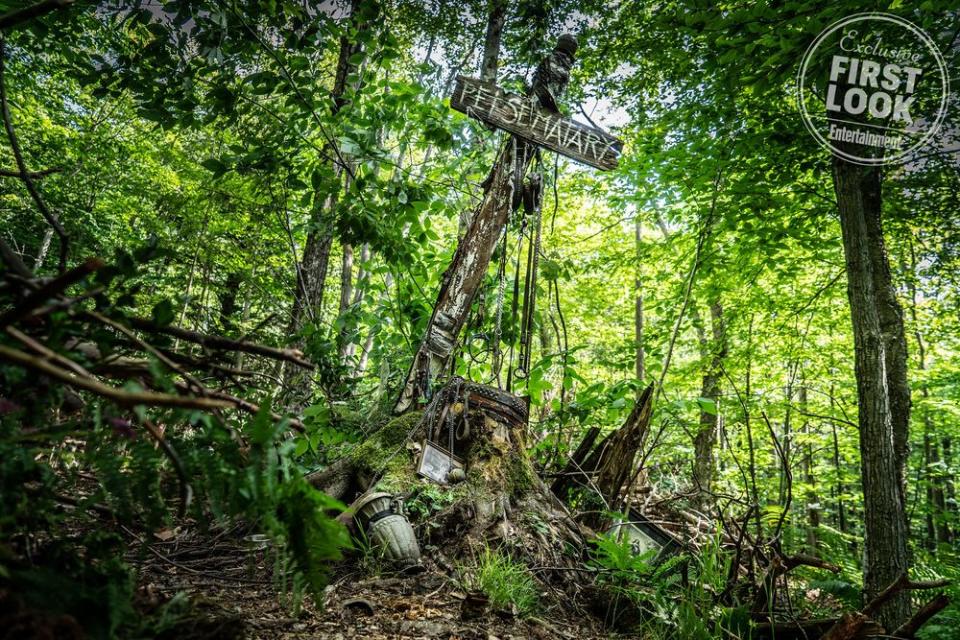
Jud, as King readers remember, is a lighthouse keeper, of sorts. He is one of the last living people who knows what lies beyond the deadfall — and how things buried there don’t lie still for very long.
“He is a good man, but he is a good man with troubles in his life,” Lithgow tells EW during our set visit this summer. “And he’s grown up with some real demons.”
Jud helps Ellie to her feet, then investigates the sharp pain in her leg. He plucks a bee stinger from her calf with his big, grimy hands. “That’s a big ’un,” he says. “No prize winner, but good enough for a ribbon.”
More alarming to the little girl are the macabre graves surrounding them. “What is this place?” she asks.
Jud tries to comfort her, but his emotions are a little clumsier than his hands. He glances back to the entrance. “Uhh, didn’t you see the sign?”
That’s a moment of lightheartedness in a story that otherwise descends steeply into despair.
This novel about an ancient burial ground that can resurrect the dead — with malevolent consequences — is the one King himself famously had reservations about sharing with readers. “I found the result so startling and gruesome that I put the book in a drawer, thinking it would never be published. Not in my lifetime, anyway.” King wrote in a 2000 introduction for the paperback. His wife, Tabitha, and editor convinced him otherwise, but the uncertainty has lingered, even though the book is sacred to many of King’s readers.
“I’m particularly uneasy about the book’s most resonant line… ‘Sometimes, dead is better,’” King wrote. “I hope with all my heart that that is not true, but in the nightmarish context of Pet Sematary, it seems to be. And it may be okay. Perhaps ‘sometimes dead is better’ is grief’s last lesson.”
It’s a lesson that Ellie’s father, Dr. Louis Creed (Jason Clarke) doesn’t care to learn. As a physician, defying death is his trade. And when he learns of a burial ground that can reverse things even after it’s too late, he becomes intoxicated by it.
“That’s what makes it more than a horror movie,” says Clarke. “I was like, ‘Where’s the horror? I’m disturbed.’ That was it for me, I found it insanely disturbing. [King] reaches inside you in some way, he always does. There is great intellect and great subconscious and subtext and thought and reason behind it.”

Widmyer describes Louis as “a guy who thinks he has death figured out. ‘I see death every day, I work in an ER. Don’t tell me about death, I understand death.’ But he doesn’t understand death when it’s dropped onto his lap. He’ll do whatever he can to undo it. It’s sort of like the science world meets the supernatural world.”
Grief is the element that makes King’s story so terrifying. It’s not just an eerie, supernatural story, but a terribly sad one. Ellie shows us that through a child’s eyes, worrying about the well-being of her own cat.
“This book is about death and talking about death and grief, and the pet cemetery is the first stage of that,” says Widmyer. “It’s almost like by not communicating about death, the chain reaction of the entire movie happens.”
“Having a pet die is a way that a lot of kids learn about death, and how to deal with death for the first time,” adds Kölsch. “It kind of helps you accept death as a natural part of life.”
Pet Sematary examines what happens when a person refuses to accept that, choosing not to say goodbye, but clinging instead to the agony of the loss until the survivor’s life essentially ends, too.
Kölsch and Widmyer compare the rejuvenating burial ground to a gambling addiction for some of the characters. “Whenever you’re down, it’s kind of like, ‘If I go one more time I can just break even!’” Kölsch says. “That happens a lot in Pet Sematary. Instead of just accepting the loss, they’re always trying to double down — and it just keeps costing more life.”
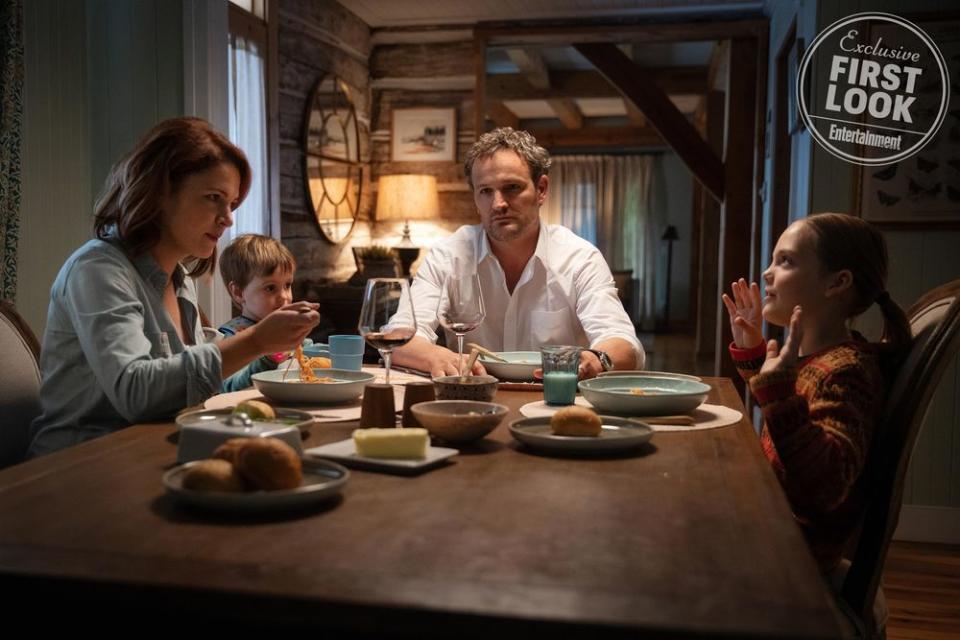
No one imagines the loss that awaits this family, which includes mom Rachel (Amy Seimetz) and toddler brother Gage (played by twins Hugo and Lucas Lavoie), who has a habit of wandering too close to the busy country road outside their new home.
The sweetness of the Creeds is one thing that makes King’s story so unsettling.
“To understand why loss is so tragic, you have to understand why life is so beautiful,” Seimetz tells EW.
After discovering this ramshackle burial ground behind her family’s red-paneled colonial home, all Ellie can foresee is a day when she has to say goodbye to her own pet, Winston Churchill — or “Church” for short.
Jud tries to show her that the Pet Sematary is not a sad or angry place. It’s a place to remember happy memories. “I carved this myself,” he says, guiding her to the marker for his dog, “Biffer — A Helluva Sniffer,” written on two boards near the center of the circles.
“He could talk, you know,” Jud tells her. She wrinkles her face in doubt, and the old man leans his head back and howls, “Rooo Rooo ROOOOOW!” Suddenly, she’s smiling. For the first time.
It’s not much of a spoiler to say that the day of Church’s demise comes sooner than she thinks, and Jud’s affection for her and her family is what motivates him to show Louis the Mi’kmaq burial ground beyond the deadfall, where things that are gone can sometimes come back.
Below is an image of the resurrected Church, stinking of the grave, making Grumpy Cat look upbeat, and more closely resembling the hissing Maine coon originally depicted on King’s novel cover than the gray British shorthair who prowled the ’89 film.
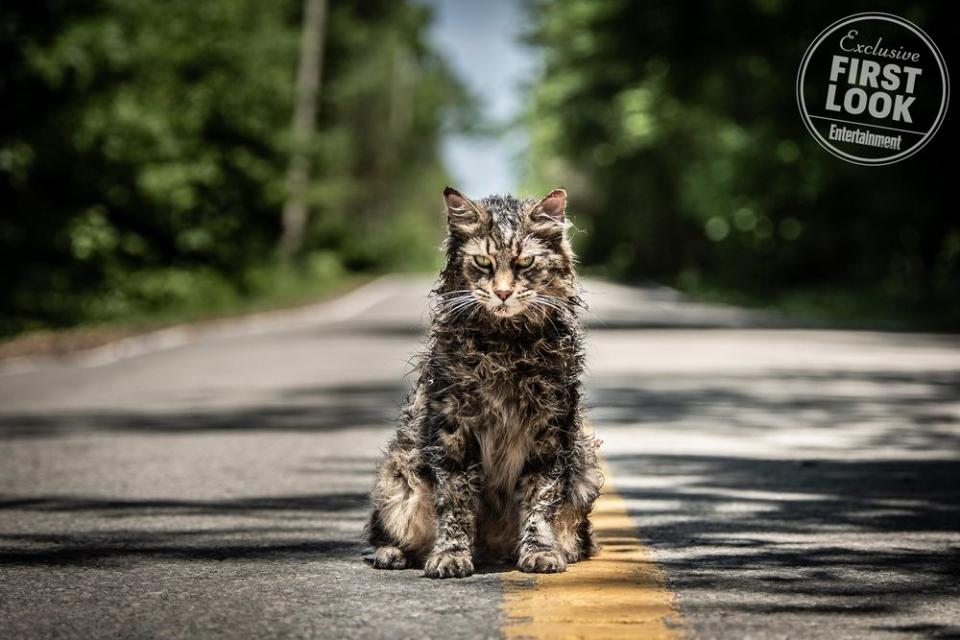
“He really cares about this little girl,” Lithgow says. “That’s what this scene is about, the beginning of a connection. He can delight a child, and it’s a very interesting color to this dark man.… It gives a very genuine and human motivation to everything that happens in this genre horror film. And when that happens, when you really care about these people and you really believe in what motivates them, then the stakes go way, way up.”
While Gwynne’s Jud was a folksy old-timer, Lithgow’s is more isolated, unwanted, and unloved, yearning to find a place to belong again. In King’s novel, Dr. Creed comes to see his elderly neighbor as the father figure he never had. In this film, Jud is the damaged one healed by the embrace of a new family.
“He’s a loner, and he’s chosen to be alone,” Lithgow says. “His life changed. He was a man whose entire life was wrapped up with his marriage, his wife. And they didn’t have children, but they wanted children. In the script there’s this very simple and sweet line, ‘It didn’t work out for Norma and me. We wanted to keep ourselves to ourselves.’ You just know that was a really, really deep relationship. And the loss of that relationship has defined his life ever since.”
This is when Rachel, the frantic mom searching for her wandering daughter, turns up in the forest scene. She’s dismayed to discover not just this makeshift boneyard, but her daughter standing there with a grubby-looking stranger.
This is a departure from King’s book, which opens with Jud crossing the road to meet his big-city neighbors within minutes of their arrival at their new country home. In the novel, he also later leads the whole family on a hike to the Pet Sematary, where things turn sour with the mom — unexpectedly and quickly.
The arrangement is slightly different, but the result is the same. Her husband may form a familial bond with this man, but she is mistrustful from the start. The little graveyard has a lot to do with that.
“Rachel went through something extremely traumatic when she was younger with her sister, and she freezes up when death is talked about,” Seimetz says. “She doesn’t want to face it and doesn’t want her daughter to go through the same thing.
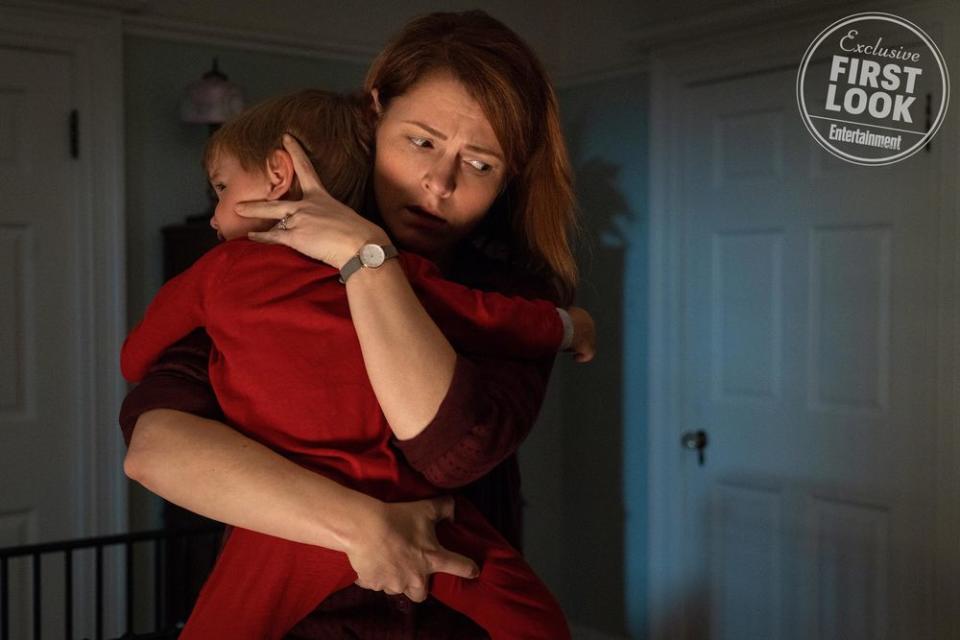
“Rachel wants her kid to have a childhood and not have to think about death like she did,” Seimetz adds. “It’s a hard topic for her to discuss. Not just because she wants to protect her kid, but also because she’s protecting some part of herself as well.”
Fans of the book and earlier movie will remember this sister well: Zelda, the twisted, agonized figure whose emaciated body was corkscrewed with spinal meningitis. The flashback to her grim, short life scarred readers and moviegoers almost as much as it did Rachel.
The filmmakers aren’t ready to reveal Zelda yet, but they give EW a hint of what’s to come. “It’s more accurate to the book, I’ll just say that,” Widmyer reveals. “In the original movie, it’s a 21-year-old guy in drag playing it, and in the book, as you recall, it’s a 10-year-old girl.”
Neither filmmaker is trying to demean the original movie. Zelda, as played by Andrew Hubatsek in director Mary Lambert’s earlier film, was one of the most chilling and memorable parts of that adaptation.
“You go, ‘How do you top Zelda?’” Widmyer says. “It was big and scary and awesome, but if you think about the reality of the Zelda situation, what that would do to a family, with her wasting away in this bedroom, and a younger sister being frightened of her older sister’s debilitating illness, that on its own is pretty scary.”
They are hoping “the grounded nature of that horror would actually be scarier than a supernatural version of it,” he adds. “The nurse, the medical equipment, what that room would feel like as a layer of dust went on everything.” He says their film will show “how that would seem from the perspective of an 8-year-old, going into that room to bring food to her, and how scary that would be.”
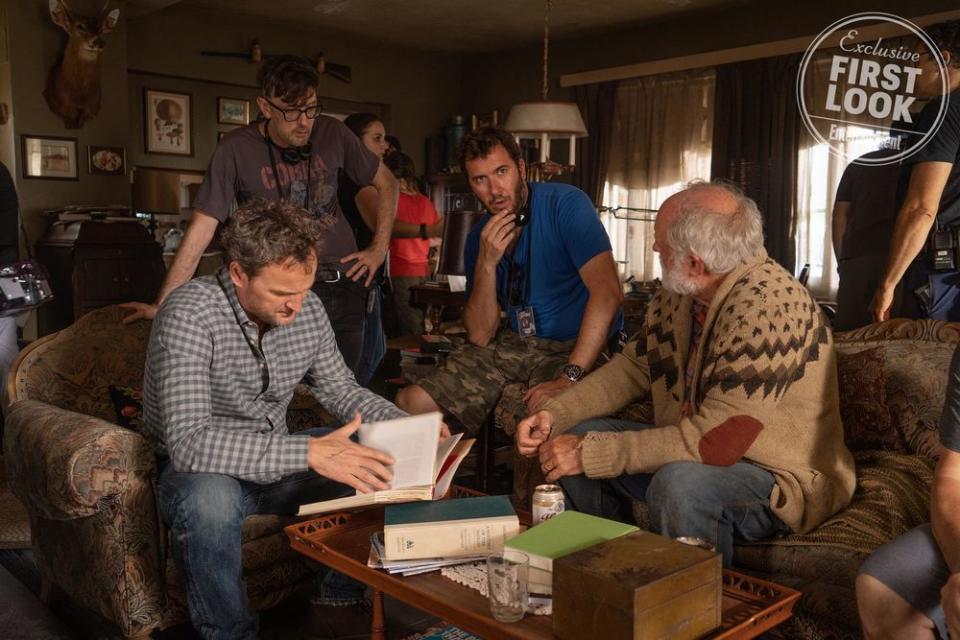
The filmmakers, pictured above in the living room set of Jud’s house, say Pet Sematary will also introduce a new take on Victor Pascow (played by Obssa Ahmed), a college kid struck by a car who dies in Dr. Creed’s care in the emergency room. Since the doctor tried valiantly to save him, the spirit of Pascow appears repeatedly to be a kind of supernatural conscience.
“We have this very normal student, but the voice that’s speaking through him is an ancient voice trying to warn him,” WIdmyer says.
The voice that ultimately pulls the doctor toward the resurrection ground is Jud himself, who thinks he will be helping the family alleviate their pain after the untimely death of their cat. He has no idea he will end up creating more anguish.
When Rachel leads her daughter away from the cemetery in a huff, Ellie cheerfully tells her mother, “He pulled the bee stinger out. It was a big ‘un!”
Her mom barely looks back as they hurry away. They leave Jud in the Pet Sematary. Alone again. But their mutual paths have already been set.
Once they’re gone, the old man looks back to the deadfall, as if he hears a voice calling to him.
He’s thinking about second chances. And the kind that shouldn’t be.
